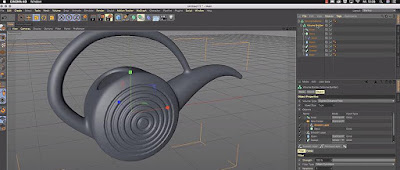Volume Modeling
In MAXON Cinema 4D R20, you can create complex models by adding or subtracting basic shapes in boolean-type operations. You can do so by using the volume Builder and Volume Masher tools.
Volume Modeling offers a complete procedural way of creating objects you could not even imagine before. Volume modeling is based on voxels. Voxels are three-dimensional pixels defined for a volumetric surface.
Node Based Material
In Cinema R20, the Uber, node, and some in-built node based materials are introduced. These materials can be used to create complex materials that cannot be created using other material systems. The Node system uses physically-based BSDF shading, comparable with a physical material that calculates diffuse shading using dispersed reflections.
The BSDF stands for Bidirectional Scattering Distribution Function – a method that emulates the physically correct transmission and reflection behaviour of surfaces.
Uber material is a generic material which is simple and very easy to use.
Camera 2D Mode
The Camera 2D Mode option displays 3D object as a 2D object. In this mode, the position of the camera does not change when you navigate, move, and zoom-in and zoom-out in the view.
This is a temporary mode, which can be used to more precisely examine parts of the scene, e.g., to paint or adjust something. This mode is designed for use in the perspective view.
CAD Data Import
You can directly and easily
import Solidworks, STEP, CATIA, JT and IGES files. Using these imported CAD
models, you can create amazing visualizations in Cinema 4D.


